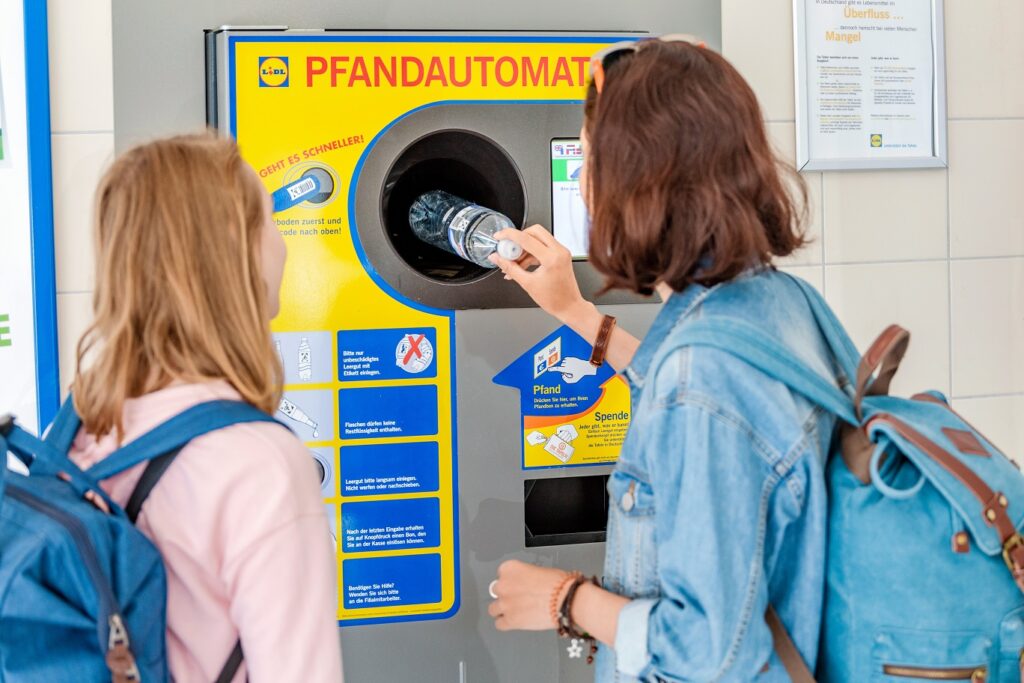If you have ever dropped off a pair of Nike sneakers at your local retail store, sent in your iPhone for recycling, or traded in an old laptop at Best Buy, you have played a part in a process known as Extended Producer Responsibility (EPR). EPR is a strategy in which businesses commit to taking responsibility for the processing and disposal of the goods they have produced after consumers have finished using them. Businesses may choose to contribute financial, logistical, and/or physical assistance to those involved in their products’ end-of-life management processes. Typically, this commitment is taken in an effort to reduce the environmental impact of consumer goods that would otherwise end up in landfills.
EPR programs vary among organizations regarding their individual values, goals, resources, and supporting infrastructures. Most companies choose to recycle their products into new goods; for instance, The Body Shop repurposes empty cosmetic containers into the likes of park benches and playgrounds. On the other hand, H&M runs a program in which used clothes are allocated into one of three categories depending on their level of use; some are sold as second-hand clothing, some are turned into cleaning cloths or new articles of clothing, and some are shredded and used for purposes like insulation. More rarely, you will see used products “upcycled” for new purposes.

Some countries even legally regulate organizations to take responsibility for their used goods: many EU countries require medical facilities to incinerate their waste, hazardous or not if it is not otherwise destined for a recycling facility. Such waste may include old medicines, packaging, sharps, and more. Thus, EPR schemes are present across industries, and rather than being limited to materials like plastics and electronics, they can cover a wide range of substances.
It becomes much more challenging to clean up waste once they reach our oceans, particularly microplastics. Thus, companies must take the necessary steps to redefine what constitutes “trash” in their customers’ minds. Appropriate advertising of recycling programs – and hassle-free access to them – are the bare minimum. Implementing incentives, such as complimentary items or money off future purchases, have been proven to elicit more consumer engagement. We commonly see this in deposit refund schemes, where consumers can receive a rebate for returning items like plastic and glass bottles. In fact, 14% of participants in a 2014 study reported that such incentives might give them the extra push to recycle.

The World Wildlife Fund (WWF) and the American Beverage Association (ABA) are taking it one step further by campaigning for an institutionalized EPR policy supported by national legislature. The WWF and ABA point to the inefficacy and inequality of our nation’s dependency on local governments, which vary in money and resources, to run recycling programs. They, therefore, urge the federal government to incentivize companies to use less virgin plastic while also utilizing post-consumer waste collection systems. The government would ideally set standards for companies beheld to nonprofit Producer Responsibility Organizations (PROs). Such standards would include “recycling targets…mechanisms for transparency and accountability, and [the alignment of] program objectives…with the nation’s broader goals of environmental justice.” You can read more about their proposal here.
To learn more about the logistics of EPR programs, visit the Sustainable Packaging Coalition guide. You can find more information, and a starting list of companies that participate in EPR programs, on the Ellen MacArthur Foundation’s website here.
 Food
Food Farmers
Farmers Sustainable Living
Sustainable Living Living Planet
Living Planet News
News